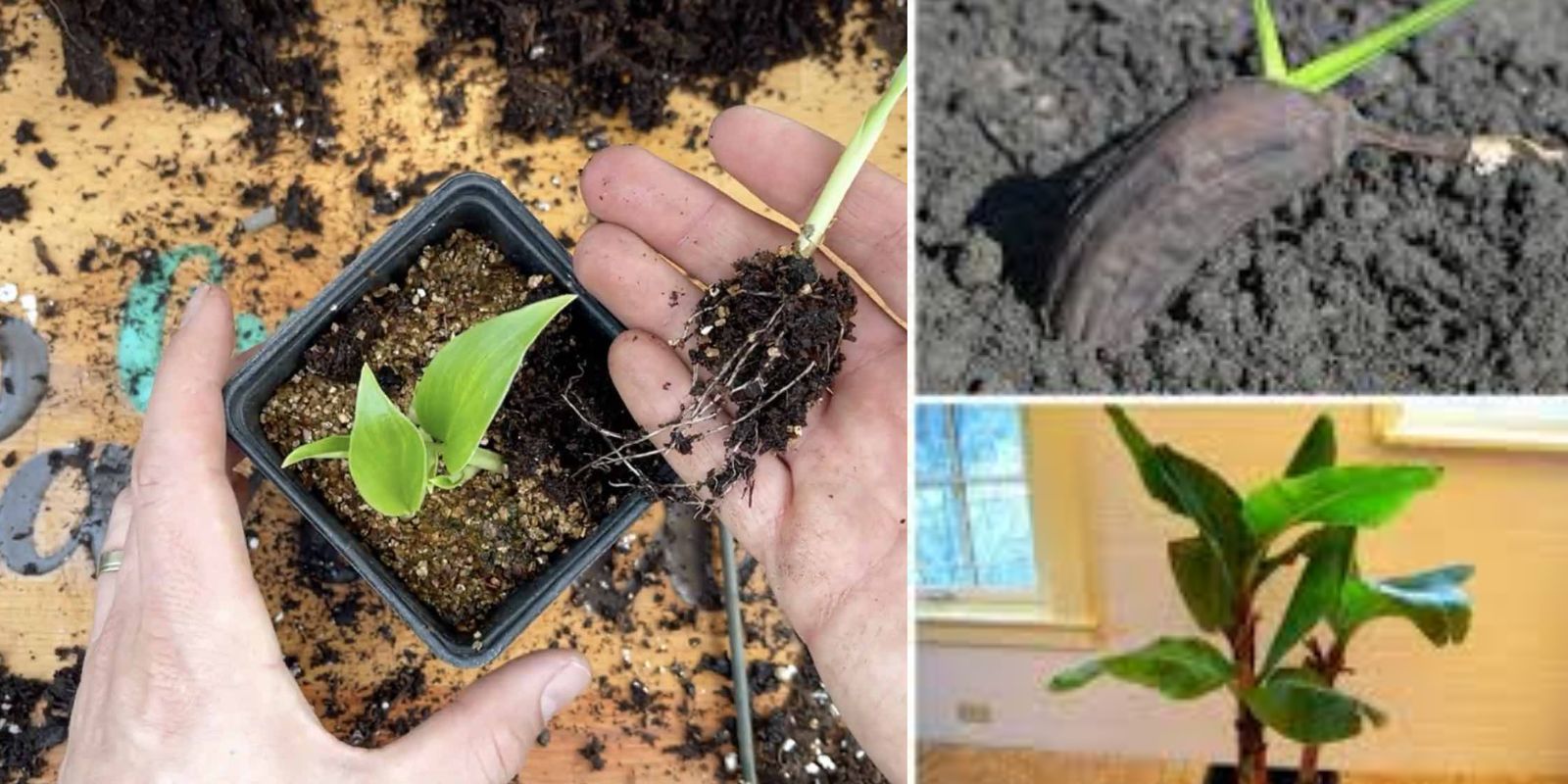Bananas are among the most popular fruits in the world, loved for their sweet taste, convenience, and nutritional value. If you’ve ever thought about growing your own banana tree, you may have wondered if planting a banana from the grocery store could do the trick. The idea seems simple and exciting—imagine turning a single banana into a thriving tree in your backyard or garden! But is it possible?
In this article, we’ll explore whether you can grow a banana tree from a banana, why it doesn’t work, and how you can successfully grow a banana tree using proper methods. We’ll also discuss the care and maintenance required for these tropical plants to thrive.
Can You Grow a Banana Tree From a Banana?
The short answer is no, you cannot grow a banana tree from a banana purchased at the grocery store. This is because most commercially available bananas are a specific variety called Cavendish, which are seedless. Without seeds, the fruit cannot sprout and grow into a new plant.
Banana trees are typically propagated using vegetative methods, such as planting suckers (baby plants) or rhizomes (underground stems) from an existing banana plant. These methods are much more reliable and effective than trying to use the fruit itself.
Why Can’t Store-Bought Bananas Grow Into Trees?
To understand why store-bought bananas can’t grow into trees, it’s important to delve into the biology and cultivation of bananas:
- Seedless Nature: Cavendish bananas are seedless because they are sterile hybrids. This trait makes them more convenient to eat but eliminates the possibility of growing new plants from the fruit.
- Selective Breeding: Over time, bananas have been selectively bred for their sweetness, size, and seedlessness. While this benefits consumers, it limits their natural reproduction.
- Lack of Viable Seeds: Wild bananas contain hard seeds, but these are not present in the bananas we commonly eat. Without seeds, a banana cannot grow into a new tree.
How to Grow a Banana Tree
Although you can’t grow a banana tree from a banana, you can still grow your own banana tree with the right techniques. Here’s a step-by-step guide to get you started:
Step 1: Obtain a Sucker or Rhizome
Banana trees reproduce vegetatively through suckers or rhizomes.
- Suckers: These are small offshoots or baby plants that grow near the base of an established banana plant.
- Rhizomes: Underground stems from which new banana plants sprout.
You can purchase these from a gardening center or obtain them from an existing banana plant.
Step 2: Prepare the Planting Area
Banana trees thrive in tropical and subtropical climates. Select a sunny spot in your garden with rich, well-draining soil.
- Soil Requirements: Bananas prefer slightly acidic soil with a pH of 5.5 to 7.0.
- Spacing: Ensure enough space for growth, as banana plants can grow up to 10–15 feet tall.
Step 3: Plant the Sucker or Rhizome
- Dig a Hole: Dig a hole that is deep enough to accommodate the roots of the sucker or rhizome.
- Plant: Place the sucker or rhizome into the hole, ensuring it is upright. Cover with soil and lightly pat it down.
- Water: Water thoroughly to help the plant settle into the soil.
Step 4: Provide Regular Care
Banana trees require consistent care to grow and produce fruit.
- Watering: Keep the soil consistently moist but not waterlogged.
- Fertilizing: Feed the plant with a balanced fertilizer high in potassium and phosphorus to encourage fruit production.
- Mulching: Apply organic mulch around the base of the plant to retain moisture and regulate soil temperature.
Step 5: Wait for Growth and Harvest
Banana trees typically take 9–12 months to mature and produce fruit. Once the bananas appear, allow them to ripen on the tree before harvesting.
Tips for Growing Banana Trees in Different Climates
Banana trees are native to tropical regions, but with the right care, they can grow in various climates:
Tropical Climates
- Ideal for banana growth.
- Requires minimal protection from the environment.
Subtropical Climates
- Ensure consistent watering during dry spells.
- Protect the plant from frost in cooler months.
Cooler Climates
- Grow in containers to move plants indoors during winter.
- Use a greenhouse or indoor grow lights for warmth and light.
Common Challenges When Growing Banana Trees
Like any plant, banana trees can face challenges. Here’s how to address them:
- Pests and Diseases
- Common pests: aphids, spider mites, and banana weevils.
- Diseases: Panama disease and black sigatoka.
- Solution: Use organic pest control methods and ensure proper plant spacing for good airflow.
- Overwatering
- Banana plants need consistent moisture but are prone to root rot if overwatered.
- Solution: Use well-draining soil and avoid waterlogging the roots.
- Nutrient Deficiency
- Signs: Yellowing leaves or poor growth.
- Solution: Regularly fertilize with a banana-specific fertilizer or compost.
Benefits of Growing Banana Trees
Growing banana trees offers several benefits:
- Fresh Fruit: Enjoy sweet, homegrown bananas straight from your garden.
- Ornamental Value: Banana plants add a tropical aesthetic to any space.
- Eco-Friendly: Growing your own food reduces reliance on store-bought produce.
- Shade and Shelter: The large leaves provide shade for smaller plants in your garden.
Conclusion
While you can’t grow a banana tree from a banana, cultivating a banana tree using proper methods is rewarding and achievable. Whether you live in a tropical climate or a cooler region, growing your own banana tree is an excellent way to enjoy fresh fruit, enhance your garden’s beauty, and connect with nature.
Are you ready to grow your own banana tree? Share your gardening experiences, tips, and questions with us in the comments!
#GrowBananaTree #HomeGardening #BananaLovers #TropicalPlants #GardenHacks #SustainableLiving #PlantCare #GardeningTips

